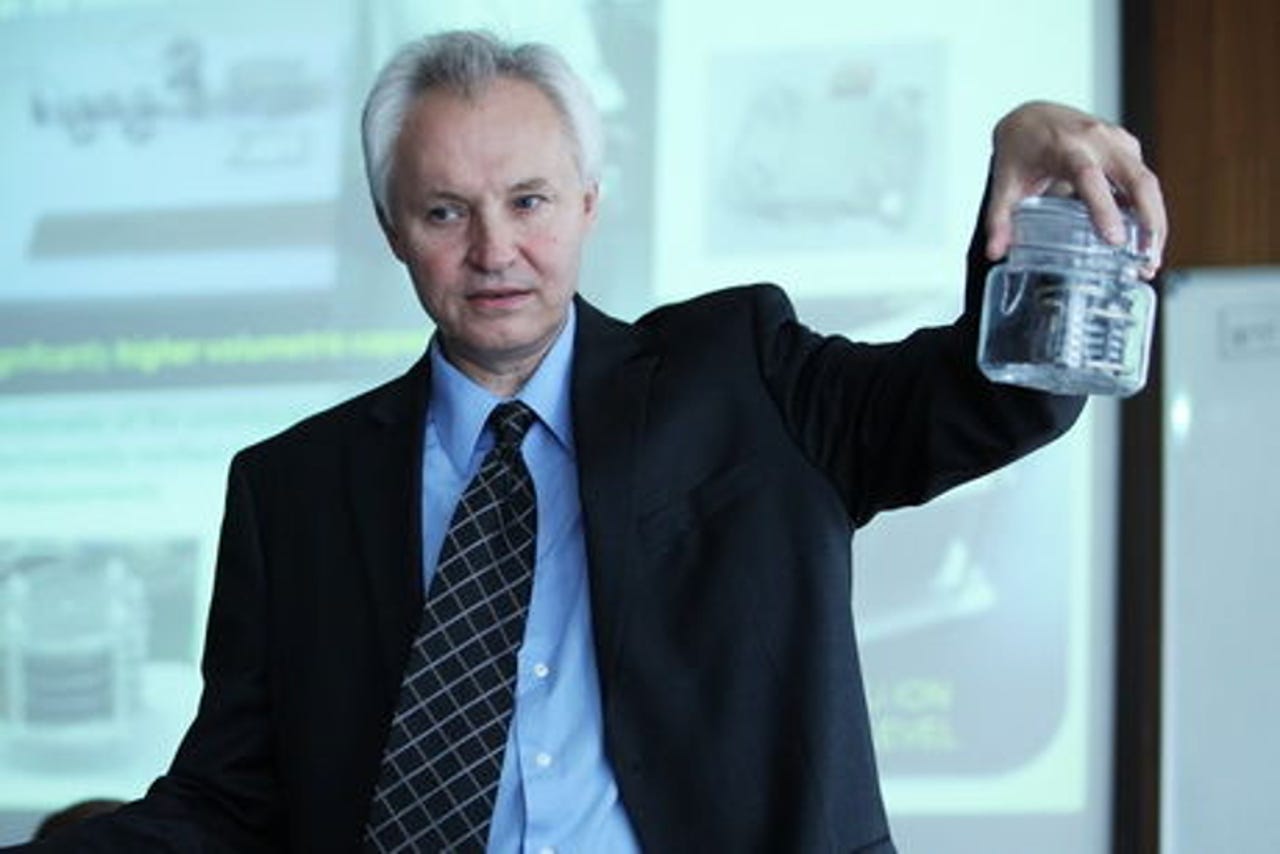Faster-charging, longer-lasting batteries: This startup thinks nanotech is the answer


HE3DA founder Jan Prochazka: "I paid for some experiments to test my theories, and they turned out to be correct."
A Czech company is building nanotechnology-based batteries that it says last longer, recharge quicker, and are more durable than current options. But expect to find them in an electric car or datacenter rather than in your smartphone.
With the rise in popularity of electric vehicles over the past couple of years, interest in new concepts for lithium-ion batteries has grown immensely.
One of those new concepts is a battery created by Prague-based HE3DA, which applies a construction method developed by Czech chemist and company founder Jan Prochazka. His company started its first automated production line in December.
The story of HE3DA, pronounced 'he-da', started when Prochazka left the R&D department of Altairnano, a large producer of Li-ion batteries in Reno, Nevada, in 2005.
"I worked on materials, but I only started work on the battery after I left," he tells ZDNet. "I had an idea about using nano particles to increase the surface of the electrodes and take away the issue of lithium-ion diffusion."
In conventional Li-ion batteries, the separators between the electrodes are 40 to 50 micrometers wide, he explains, while the electrodes themselves are also 50 micrometers wide.
"So literally, 50 percent of the actual battery consists of separators." He finally got to test his theories in 2007, he says. "I paid for some experiments to test my theories, and they turned out to be correct."
The initial goal was to create a battery that simply lasts longer and recharges more rapidly than the competition. But the main advantage turned out to be battery safety and lower production costs.
"I realised that a bit later on," Prochazka recalls. "The first intention was to build up the capacity, and the secondary goal was to up the charge on each electrode by 10,000 times."
That objective turned out to be a bit of a disappointment, as there was a discharge on some electrode areas. "So the concept was limited by that. But the safety and performance were still very good, and the production cost was about 1/20th of that of existing technologies," he says.
Prochazka explains that the timing also turned out to be just right, because interest in electric cars has been driving demand for larger Li-ion batteries.
"Had we made the same breakthrough 10 years ago, I doubt it would have sparked the same level of interest," he says.
"In 2005, the total global output of lithium-ion batteries was still only around 1.3GWh. In 2010, you saw that the development of electric mobility was starting to having an impact, but global production was still only a little over 5GWh. Another five years down the line, however, that figure has risen to 35GWh."
Because of that, Prochazka is not considering the market for smartphone batteries to be viable.
"Our market is in big batteries," he says. "The bigger, the better." The smallest battery HE3DA will be producing will be 1,000kWh, which is more than 1,000 times that of a standard smartphone battery. "Our technology is especially suited to a starting battery at around the same size of existing batteries, but with much higher power, namely 48V." A standard starting battery delivers around 12V.
Another market Prochazka is looking at, is the market for backup generators in datacenters.
"The battery has a response time of milliseconds on the grid, so it is very useful for emergency power. You can operate at a constant voltage. It is always ready to supply power, enough for the diesel generators to kick in. You won't lose any data," he says.
It has proven popular, with Prochazka getting a local investor on board in 2014, allowing him to build 250 prototypes. With recent additional investments, he has now been able to automate his first production line.
"The capacity remains small, though. We can produce around 5MWh per year," he says. "However, we're already sold out and we cannot meet the demands of the retail market. We're building a mass production line as fast as possible. Hopefully, mass production will commence by the end of this year or the first quarter of next year."